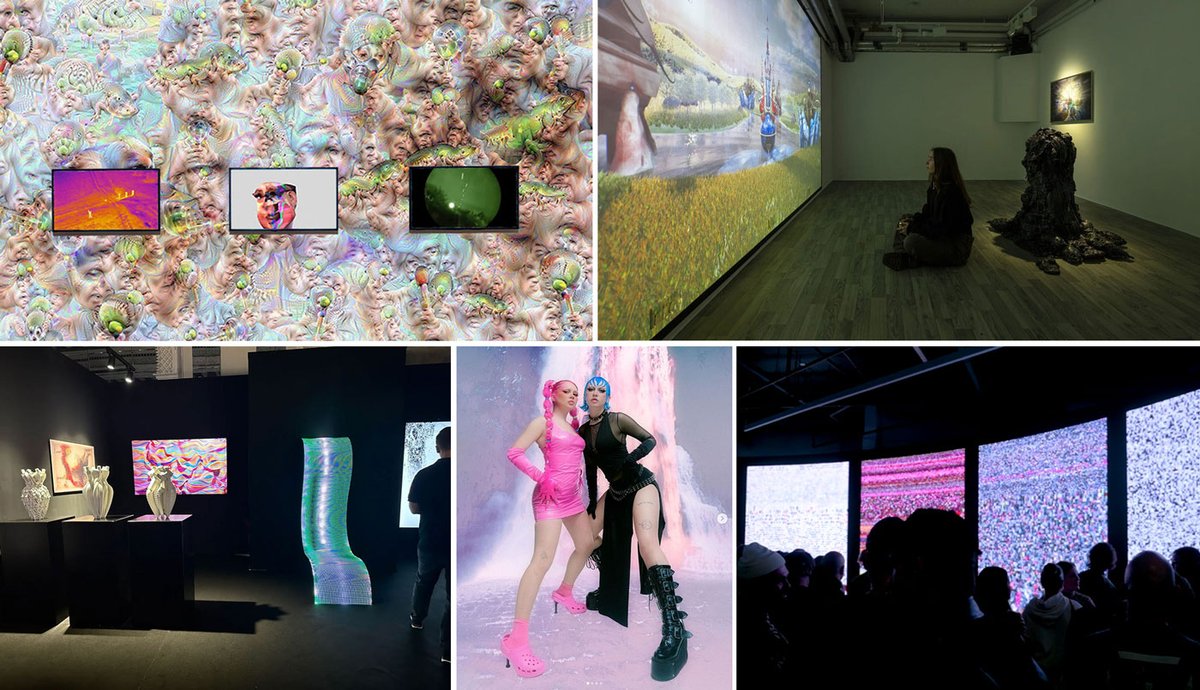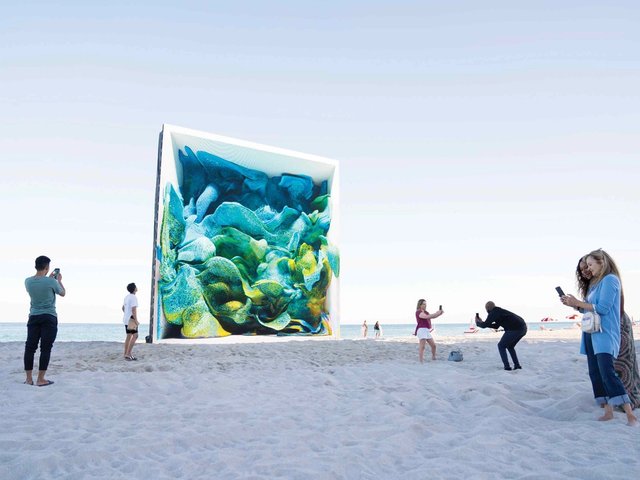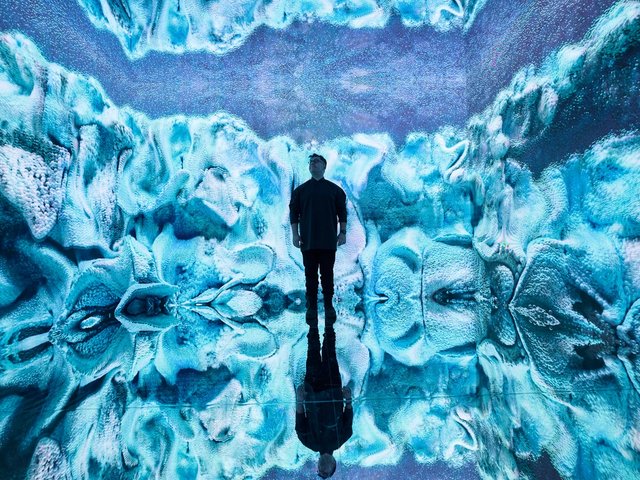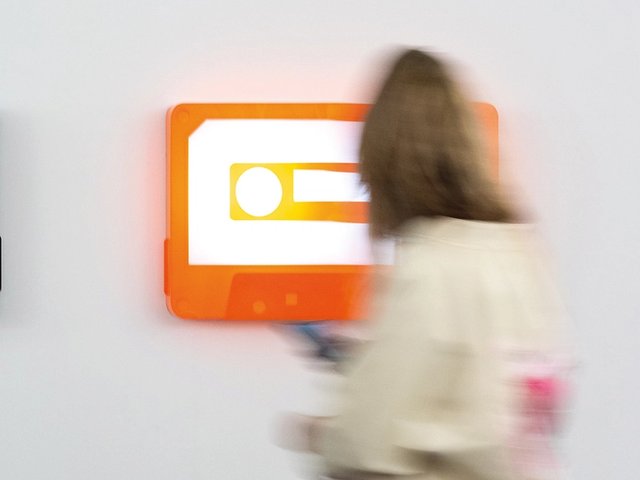It is more likely that you’ve heard of Fotomuseum Winterthur than that you’ve visited. Located in the Swiss countryside outside Zurich, it is—like the Photographer’s Gallery in London—a museum for contemporary photography that is having the slow and often painful discussions that define digital art as it rubs uncomfortably against more institutionally established mediums.
When I visited last fall to discuss how my Thirst Trap Glitch Gifs series addresses the digital curator Marco De Mutiis’s developing exhibition The Lure of the Image, we also visited a nearby goat farm.
The Tommie Hotel by contrast is located in the heart of Hollywood and features a swanky rooftop pool of Palm Springs design where the SuperRare curator Paloma Rodriguez created an exhibition that also included the Thirst Trap Glitch Gifs.
Unlike in London, I found that many artists in LA deeply identify with NFT and crypto art as their central medium and scene
These same artworks were also recently exhibited at The NFT Gallery, a commercial art space located in both New York City and London’s Mayfair. The exhibition, curated by Micol Ap of Vertical Crypto Art, celebrated International Women’s Day by opening in two countries at once. The opening celebration in London had over a hundred people in the gallery for a panel; while the closing occurred in NYC, which had about the same.
The nearly simultaneous exhibition of artworks in different countries, cultures, communities, and scenes is unique to the period of digital art we are in and has the side effect of exposing the structural differences that historically have underlain how digital art is supported and understood in these desperate locales.
One of the biggest differences I have noticed is the extent to which the curators, exhibition spaces and digital artists themselves identify with the NFT. I hypothesised that strong identification with the NFT, which enables a commercial market for digital art, correlates with lack of public funding for art.
Not everyone I talked to agreed.
Digital art in New York
Christiane Paul, curator of New Media Arts at the Whitney, will meaningfully argue that it is incorrect to think of digital art scenes as separated by geographic and national boundaries. In a recent conversation with Paul the term “porous boundaries” was in frequent use to describe both digital art communities and Paul's on-view exhibition Refigured. The Whitney was the first major museum to have its own digital art acquisition committee, officially created in 2017. While half of the artists in Refigured claim New York as home, the NYC museum is home to all the artworks on display. Many museums are exhibiting digital art, few are investing in a permanent collection. The Whitney’s permanent collection of digital art is a triumph Paul has long worked to establish. It has had a cascading impact on how digital art has been collected with bitforms gallery often acting as the bridge between artists, the city’s institutions and private collectors.

Zach Blas and Jemima Wyman, im here to learn so :)))))), 2017 in The Whitney’s Refigured exhibition Whitney Museum of American Art
Exhibition Highlight
Refigured
Whitney Museum of American Art, New York City
3 March—3 July 2023
Digital Art in London
The first time the British Arts Council gave me money, facilitated by the digital performance gallery Arebyte, I was honestly confused. I grew up in the United States where the budget for military marching bands is almost twice as much as the entire National Endowment for the Arts . While there is much concern about its future, the British Arts Council uses public funding and The National Lottery to grant £407 million per year to 828 arts organisations, museums and libraries.
In London, I particularly notice how many of us use the NFT mechanism to support the collection of practices that already had some supportive outlets for revenue and display. Long encouraged and supported by programmes like Arebyte and Gazelli Art House's Gazell.io,, those of us working in London have NFT versions of our work but don’t identify deeply with the scene as a movement culturally separate from our established practices. You can collect Jake Elwes’s deep fake drag performances (The Zizi Show) as NFTs but their exhibition and curatorial concerns don’t centre on crypto art or its movement. At least not yet. Alex Estorick’s critical NFT publication Right Click Save calls the city home though at present only 12% of the site’s traffic comes from within the UK (this publication’s UK traffic is about 20%).
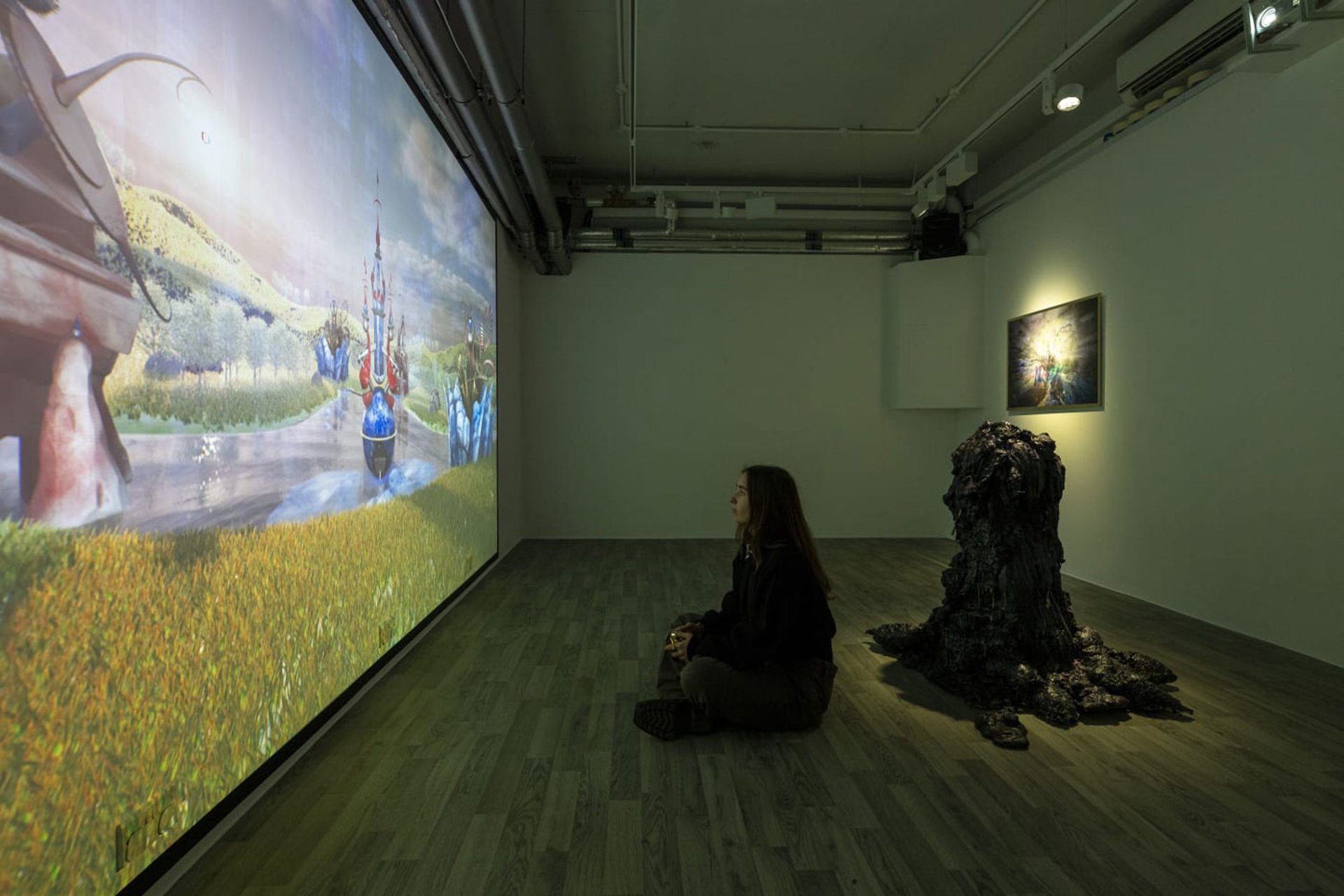
Libby Heaney, ENT-ER THE GARDEN OF FORKING PATHS, Gazelli Art House London instagram.com/libby_heaney_
Exhibition Highlight
Libby Heaney: ENT-ER THE GARDEN OF FORKING PATHS
Gazelli Art House, Gazell.io
30 March—13 May 2023
Digital Art in Los Angeles
Katie Payton, who recently curated LIFELIKE at Vellum, echoes many others I spoke to in LA when she explains that, “The Los Angeles contemporary media art and NFT scene arises not just from one history, but a convergence of histories.” One of the unique convergences is the impact of corporations as a source of simultaneous funding and tension. When LACMA’s Art and Tech Lab originally opened in 1967 it played matchmaker between artists and corporations, placing artists inside the walls of companies like Disney and The RAND Corporation. If funding of artists through the corporations they often critique is uncomfortable to you, LACMA Art + Technology Lab Program Director Joel Ferree reminds us that is part of the value. Ever since the programme placed John Chamberlain inside RAND Corporation there’s been a history of dialogue between corporation and artist that isn't without a productive tension.
Unlike in London, I found that many artists in LA deeply identify with NFT and crypto art as their central medium and scene. Many digital artists who have been working for decades out of the international attention of the pre-crypto art world have found sources of revenue, community and support through grassroots efforts like Cody Edison’s NFTuesday and Tezos-based collectors like Daniel Kantor. Vellum, located on Melrose, is quickly becoming one of the world’s premiere NFT-based galleries. It features swanky screens and a robust curatorial team that feels as rooted in the local NFT community as it is internally known.
Exhibition Highlight
Enrique Agudo, IPSEITY,
Vellum LA
6 April—14 May 2023
Digital Art in Dubai
The Art Dubai with its expanding digital section is resurging as an art-world mainstay.
Newly opened in 2022, Galloire has been bringing the most talked-about digital artists to the city including a major exhibition of the Madrid/LA-based practitioner Daniel Canogar, who was also included in a presentation by bitforms gallery at the Santa Monica Art Museum’s February opening. While I won’t claim to understand the systems or mechanics, the UAE government funding for arts and culture is attracting increased attention from western artists. The UAE also has no income or capital gains tax, meaning that profits made from the sale of crypto, NFTs, or artwork are not taxed.
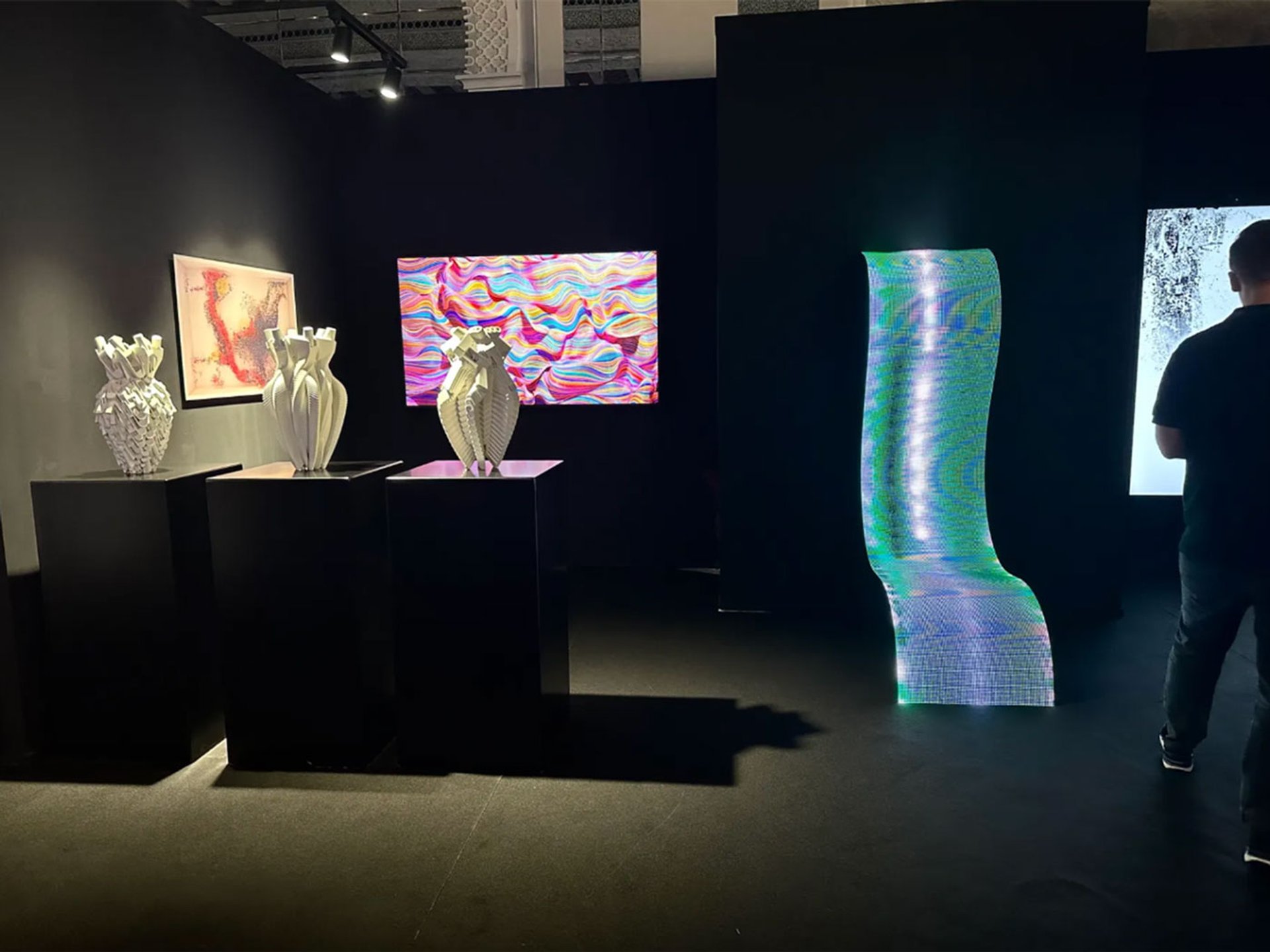
The Galloire Gallery booth at Art Dubai 2023 included 'phygital' works such as prints made from generative AI works by Jean-Jacques Duclaux (back left), 3D-printed vases by Addie Wagenknecht (front left) and Daniel Canogar’s data-driven, sculptural LED screen Billow (2022, right). Photo: Aimee Dawson
Exhibition Highlight
Daniel Canogar: Loose Threads.
Galloire
Digital Art in Europe
Started in 1979, Ars Electronica is a festival of digital and media art that has always operated outside the traditional art world. et, many of us whose work deals with technology's darker implications have found a home in its funky, mad scientist world. I have found that, compared to its nascent reception in the US, my work thrives in Austria, Germany, and Switzerland where popular concerns with technology and privacy, the issues my work addresses, are more developed. The Ars Electronica curator Christl Baur describes this as a “cultural tradition of critical concern where success is valued in different terms, as are the costs of technology.” Ars Electronica adds “society” as an important third pillar to the convergence of art and technology.
The intention of considering the artists' and technologists' responsibility to society leads to different answers in what work is celebrated and funded. Almost 45 years of operations gives Ars Electronica a serenity when thinking about the impact of NFTs on digital art; it has witnessed and outlived so many changes and trends. Ars Electronica is funded by the City of Linz, the Province of Upper Austria, and the Republic of Austria, with support from world-renowned academic institutions and a very small sprinkling of corporate sponsors.
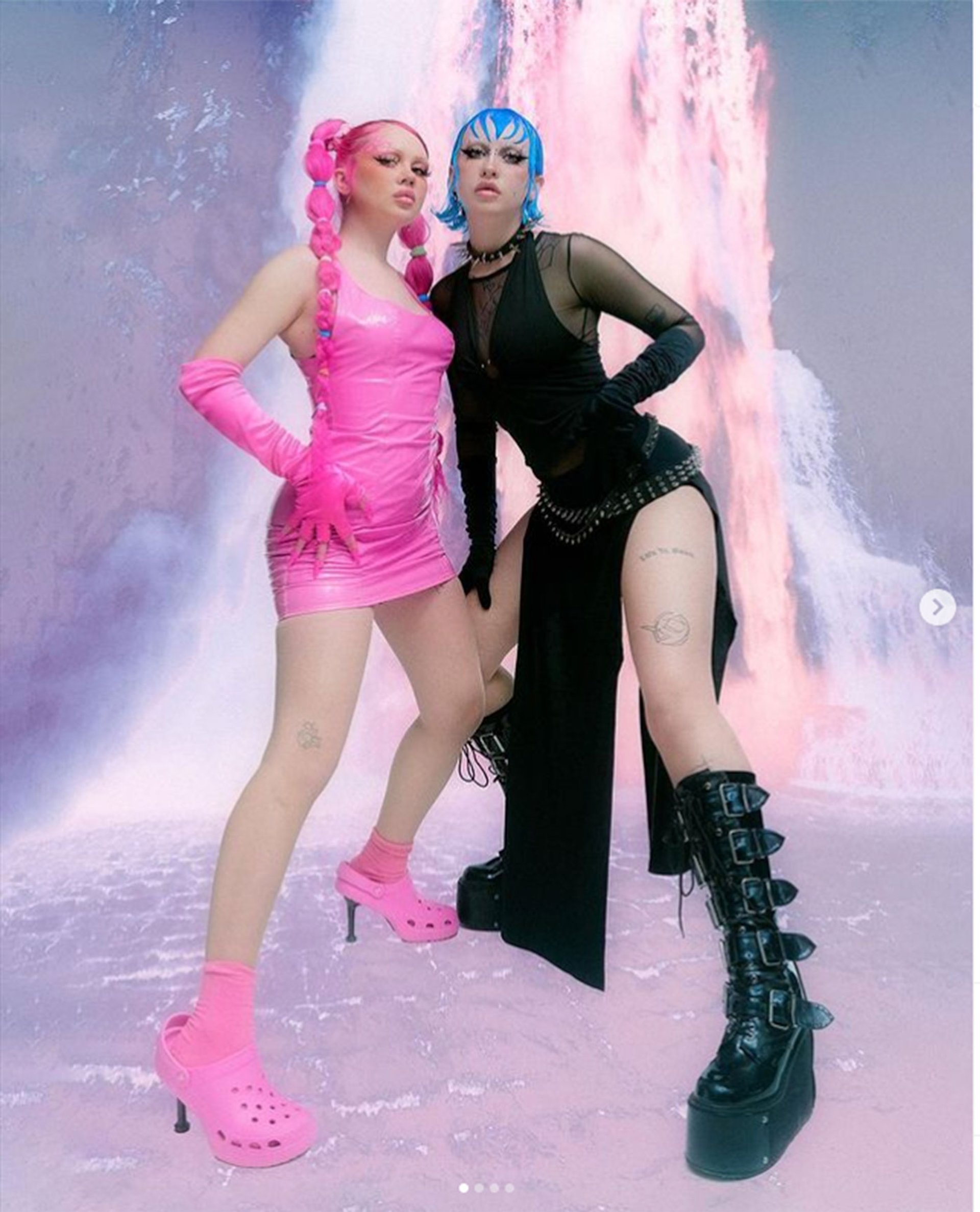
Hannah and Lea Neckel promote their Beyond the Waterfall, Linz, 2023 instagram.com/cybervoid69
Exhibition Highlight
Hannah & Lea Neckel: beyond the waterfall lost in the stream of consciousness
Francisco Carolinum, Linz, Austria
29 March—21 May 2023
Digital art beyond borders...
There are, of course, other important digital art cities not mentioned in this article. Notably this article makes no mention of Asian cities while unceremoniously lumping all of Europe into a single paragraph. And then there are the goats, the Swiss countryside, the non cities, the places where digital art is located for other reasons, personal reasons. The digital art world may be porous, but our lives are often congested by visas and personal preferences.
Does digital art really need to be anywhere? Not technically, no. But where it is being created, exhibited, and funded indelibly impacts how work is made, by whom, and how we come to find out about it. No funding structure is without its complexities and it is worth celebrating the diversity of motivations and models that is enabling the general quality we are experiencing.


